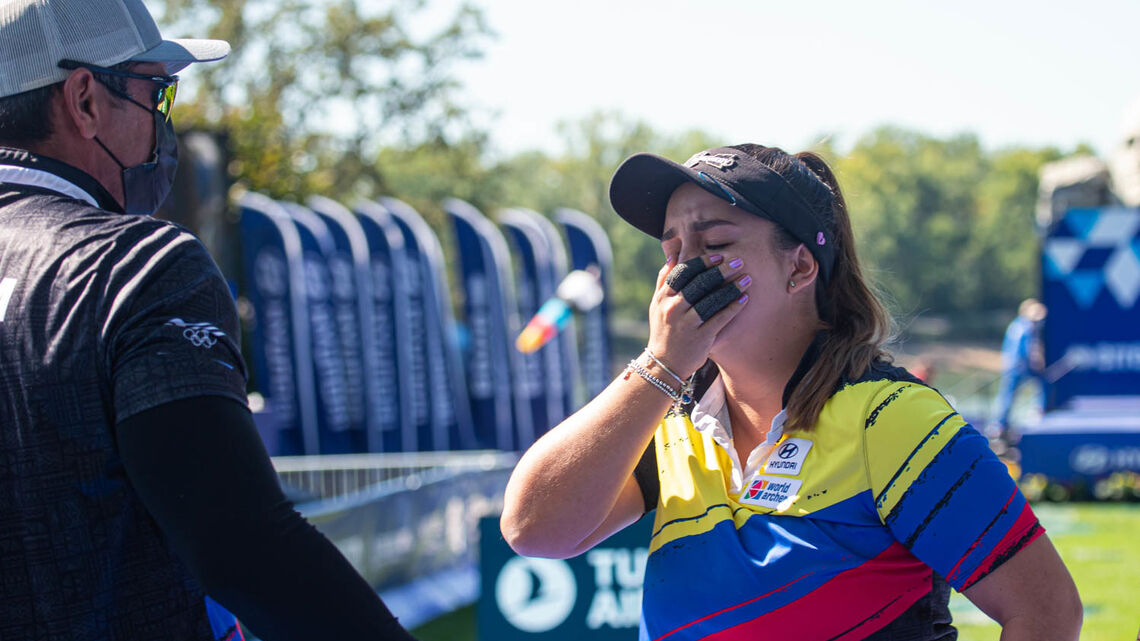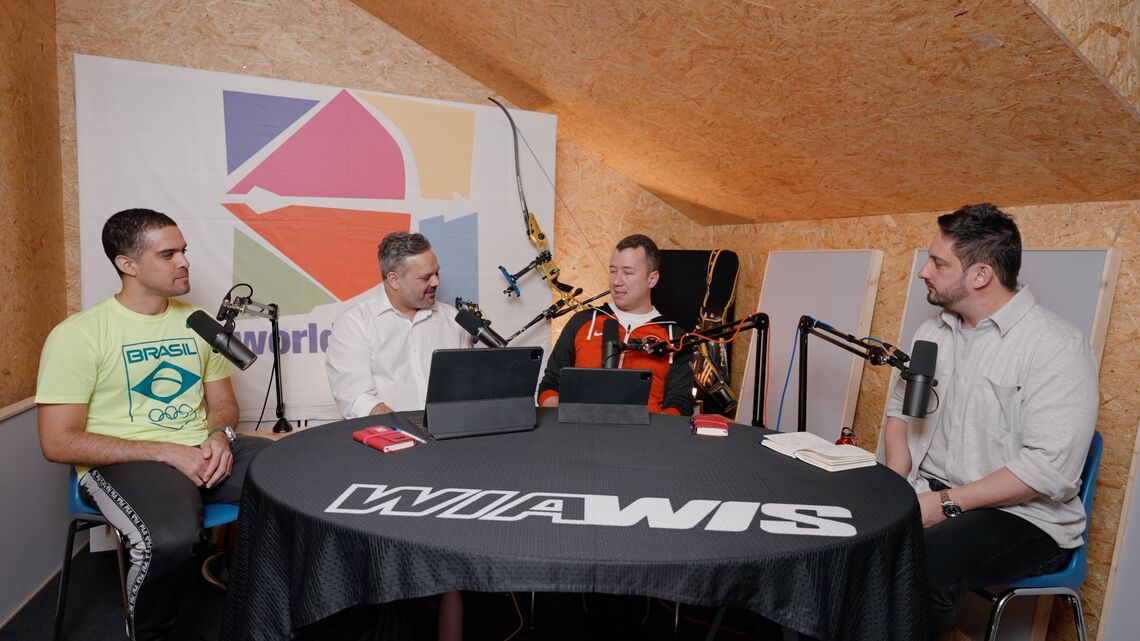Archery’s scariest taboo: The mystery of ‘target panic’

“The target doesn’t do anything to you!”
Turkish Olympic team psychologist Cem Gizep said to me while we were filming the first four episodes of the new Taking Aim podcast, which launched on 9 February on archery+.
“So why is it called ‘target panic’?”
The first four episodes of the podcast were discussions on the internal workings of an archer’s mind with Cem, Brazilian Olympian Bernardo Oliveira and chartered psychologist Dr Jon Rhodes.
As a sports psych major (and a former international fencer) who’s been commentating on the world’s best archers for the past five years, this topic was right in my wheelhouse. But I headed to our studio in Berlin having been led to believe that the subject of ‘target panic’ was something not to be mentioned.
I’ve asked top international archers, coaches and support staff about it – and the overall response was… deafening silence.
“I don’t want to talk about it. It could happen to me if I do,” one athlete said.
Despite so many advancements in sports science, has the dreaded target panic completely evaded proper evaluation, and any modern methods to resolve or protect athletes from it? Like a voodoo spell, it seemed like something to avoid at all costs, with any mention severely frowned upon.
Terrifying, I thought. So I’ve long conformed to that unwritten rule, not talking about it (much) during our live broadcasts. But this podcast was the chance.

The most decorated athlete in the history of the Hyundai Archery World Cup, Braden Gellenthien, once described target panic as: “Any kind of angst that prevents you from performing at your best.”
In Korea, it’s often called ‘clicker disease’.
The better-known name is, really, misleading. It’s not the target that causes panic, it’s the weather, or the venue, or the environment, or the competition, or your opponents, or the situation.
“It could be anything and you don’t know when it’s coming,” said Bernardo.
Ultimately, it’s fear – of failure or success.
But how does it manifest? World number one Mike Schloesser explains it as being unable to aim or being unable to release. For others, it’s a flinch, while some say it is an inability to get the arrow past the clicker.
All of those are quite simple physical processes. Suddenly they become impossible.
“I was terrified of shooting,” said Sara Lopez, the eight-time Hyundai Archery World Cup Champion who suffered from this debilitating phenomenon for nearly two seasons. “I didn’t know if it would last forever or not.”
“I was ashamed.”
Gellenthien, Schloesser and Lopez. Three of the best to ever compete in this game, all talking about their own experiences with the terrible affliction of target panic.
Lopez defeated her target panic – and then won the world championships in 2021.
Schloesser had a period when the last arrows of his major matches were a struggle. His recent perfect final in Nîmes would suggest that is seemingly long in the past.
Gellenthien used mental maintenance techniques to ensure he could continue competing at a high level throughout his long career.
All these elite archers managed their target panic.
The real issue is the lack of resources and open conversation about the subject. So when archers at an earlier stage in their journeys in the sport suffer from the terrifying taboo, it can prove debilitating. More than a few turn away from their bows because of it.
“Anxiety emerges from an amalgamation of increased pressure, a sharp decline in skill proficiency, and heightened awareness,” explains Dr Rhodes. “It’s not unique to archery. It’s a universal challenge.”
The problem in a sport like archery that is so much about routine and process and feeling is that the anxiety – target panic – ruins everything. It’s so destructive that without professional help, it is often difficult to see the underlying issue, morph it into something positive and beat it.
“It’s what’s under the carpet that’s important,” adds Cem. “Once we identify the reasons for the problem, we can put processes in place to fix them.”
It’s time to dispel this voodoo myth and it’s time to start talking about target panic.
Watch the new Taking Aim podcast on archery+ to learn more about the sport’s mental game.








